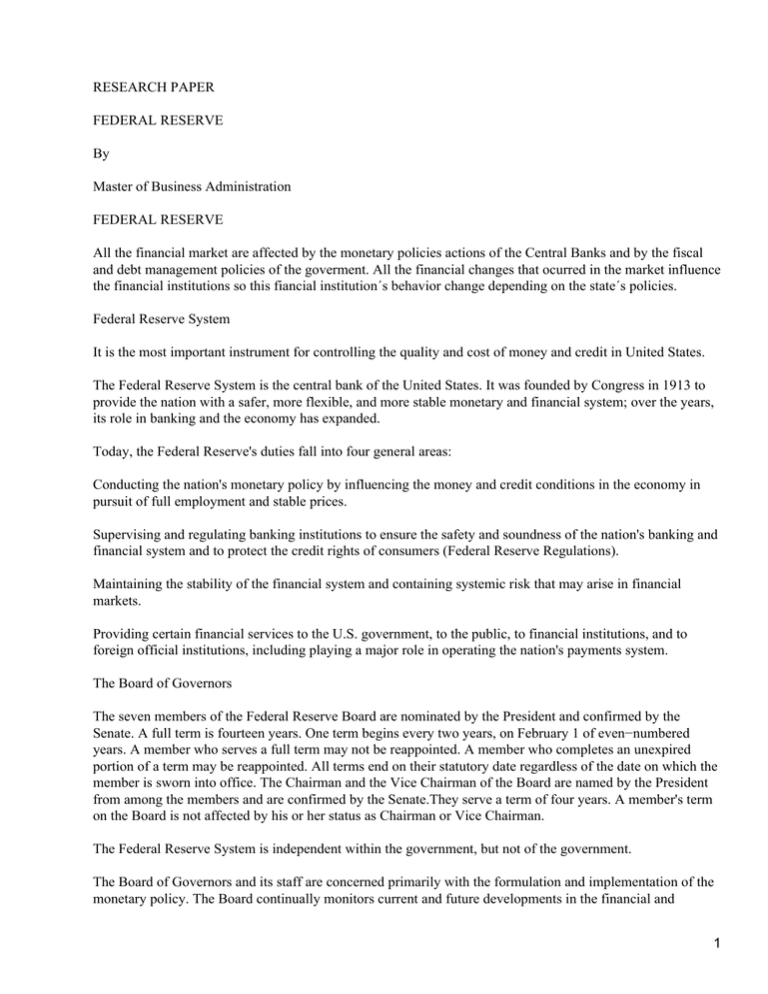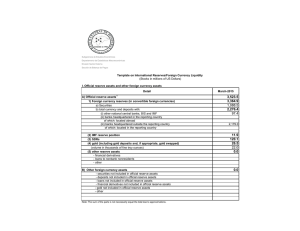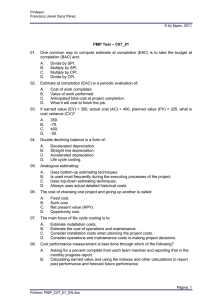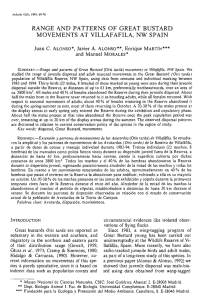The Federal Reserve # La reserva federal
Anuncio

RESEARCH PAPER FEDERAL RESERVE By Master of Business Administration FEDERAL RESERVE All the financial market are affected by the monetary policies actions of the Central Banks and by the fiscal and debt management policies of the goverment. All the financial changes that ocurred in the market influence the financial institutions so this fiancial institution´s behavior change depending on the state´s policies. Federal Reserve System It is the most important instrument for controlling the quality and cost of money and credit in United States. The Federal Reserve System is the central bank of the United States. It was founded by Congress in 1913 to provide the nation with a safer, more flexible, and more stable monetary and financial system; over the years, its role in banking and the economy has expanded. Today, the Federal Reserve's duties fall into four general areas: Conducting the nation's monetary policy by influencing the money and credit conditions in the economy in pursuit of full employment and stable prices. Supervising and regulating banking institutions to ensure the safety and soundness of the nation's banking and financial system and to protect the credit rights of consumers (Federal Reserve Regulations). Maintaining the stability of the financial system and containing systemic risk that may arise in financial markets. Providing certain financial services to the U.S. government, to the public, to financial institutions, and to foreign official institutions, including playing a major role in operating the nation's payments system. The Board of Governors The seven members of the Federal Reserve Board are nominated by the President and confirmed by the Senate. A full term is fourteen years. One term begins every two years, on February 1 of even−numbered years. A member who serves a full term may not be reappointed. A member who completes an unexpired portion of a term may be reappointed. All terms end on their statutory date regardless of the date on which the member is sworn into office. The Chairman and the Vice Chairman of the Board are named by the President from among the members and are confirmed by the Senate.They serve a term of four years. A member's term on the Board is not affected by his or her status as Chairman or Vice Chairman. The Federal Reserve System is independent within the government, but not of the government. The Board of Governors and its staff are concerned primarily with the formulation and implementation of the monetary policy. The Board continually monitors current and future developments in the financial and 1 nonfinancial sectors of the economy. Current interest rate movements in the money and capital markets are of great significance to the board but also takes care of the future interest rates that are closely linked to the volume of saving and the investment in the economy and therefore the different level of employment and prices. Of the major instruments of monetary policy, the board can determine the appropiate level of reserve requirement for depository institutions. Also determine the discounted rate established by the individual Reserve banks. Other actions of the Board is to examines, supervises, and regulates state members banks, bank holding companies and Edge Act and Agreement corporations The President The Federal Reserve Act provides that the president of a Federal Reserve Bank shall be the chief executive officer of the Bank, appointed by the board of directors of the Bank, with the approval of the Board of Governors of the Federal Reserve System, for a term of five years. The terms of all the presidents of the twelve District Banks run concurrently, ending on the last day of February of years numbered 6 and 1 (for example, 1991, 1996, and 2001). The appointment of a president who takes office after a term has begun ends upon the completion of that term. A president of a Reserve Bank may be reappointed after serving a full term or an incomplete term. Reserve Bank presidents are subject to mandatory retirement upon becoming 65 years of age. The Reserve Banks Congress created a decentralize system for conducting monetary policy but the central bank will have great power and influence in the different banks. The system is form by 12 Reserve banks from Boston to San Francisco. This banks were call Federal Reserve Banks and was to be responsable for keeping track of economic and financial conditions in its own specific region of the country and for regulating member banks in that area. The Federal Open−Market Committee It has become the central point of Federal Reserve deliberation in recent years, and its concerns include all aspects of monetary policy and every technique available to the Federal Reserve. The Federal Open−Market Committee is composed of the seven members of the Board of Governors and five Reserve bank prsidents a total of 12 voting members. This Committee formulates a strategy to guide the trading desk of the New York Fed in the period until the next meeting of the commitee. Techniques of Monetary Control The last policy goal of the monetary policy is to influence in the national productivity measured by nominal gross national product (GNP), which is affected by inflation. Because if the economy is growing at stable and healty rate, the economy will a ble to support an increasing number of new jobs in an environment of relativily stable prices. The main actions of the Federal Reserve is the supply and demand for money. On the demand side, the monetary base is the sum of bank reserves and currency outside bank, together composing total currency. The relationship can be write as: Demand is equal, one devide by r plus c and multiply by the monetary base. Instruments 2 Reserve requirements The need for maintain a specified percentage of its transaction accouts in the form of reserves, either as cash in the bank´s vault or as deposits with the Fed. Discount rate This mean the interest rate charged by the Federal Reserve to depositary institutions when those institutions borrow from the Fed. Open market operations It refers to the purchase and sale of securities by the Federal Reserve in the open market. Bibliography Financial Institutions Peter S.Rose, James W.Kolari Fifth Edition Texas University 1997 Federal Reserve HIPERVÍNCULO Http://www.frbsf.org/system/fedsystem/monpol/structure.html Http://www.frbsf.org/system/fedsystem/monpol/structure.html Federal Reserve HIPERVÍNCULO Http://www.stls.frb.org/fred/ Http://www.stls.frb.org/fred/ 3





